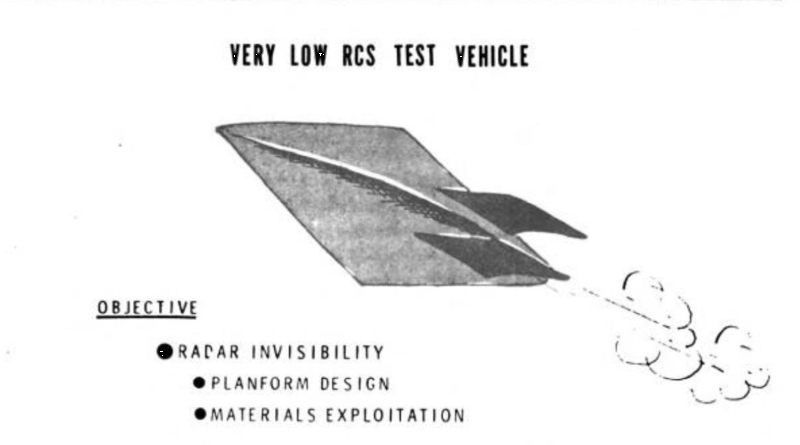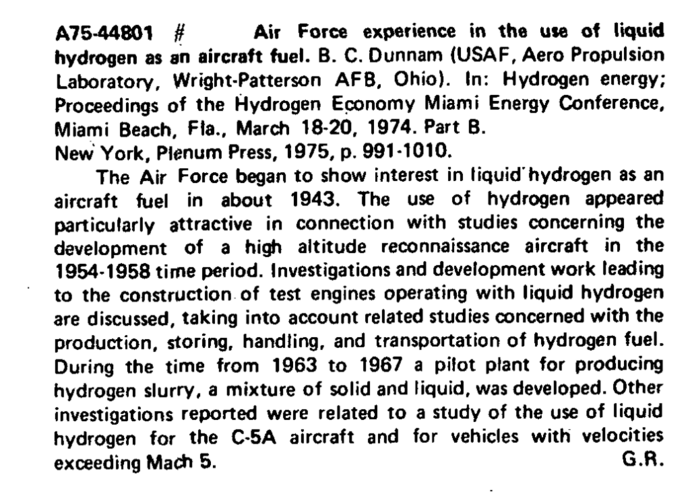- Joined
- 27 December 2005
- Messages
- 16,414
- Reaction score
- 18,936
Attachments
Last edited:
The date in the filename is a red herring. It's from a series of pictures prepared for "Langley Artifacts for HQ Code R - Aerospace Design - exhibit". A series which contains all manner of interesting models and such from various projects and eras.URL?Not sure if this should go here or the 262 thread (or neither!) :
View attachment 701665
Compare with the patent sketch in first post. It was from LaRC image library
Given the date in the filename and how generic the shape is, not sure if its related.
The date in the filename is a red herring. It's from a series of pictures prepared for "Langley Artifacts for HQ Code R - Aerospace Design - exhibit". A series which contains all manner of interesting models and such from various projects and eras.URL?Not sure if this should go here or the 262 thread (or neither!) :
View attachment 701665
Compare with the patent sketch in first post. It was from LaRC image library
Given the date in the filename and how generic the shape is, not sure if its related.
Lacking the vertical fins, though. Also, I'm remembering from the A-12 discussion that apparently that straight trailing edge makes for a pretty significant forward spike in RCS.It's a Ryan UAV model though.
Hey, funny thought. doesn't the description of the Ryan model 268 kinda match up with the sketches of the alleged TR-3?
This is a model in the SDASM collection. Note the tailfins are different - presumably the smaller one has been broken.
Underside of same (I think?)Fat boi.. Possibly Model 262 related, possibly not.
View: https://flic.kr/p/UxHAkA
Model 262 - wingtips are different I guess.
Right. But what I'm saying is that, couldn't it be possible that the Ryan LRV and/or THAP flights were responsible for the sightings?Hey, funny thought. doesn't the description of the Ryan model 268 kinda match up with the sketches of the alleged TR-3?
The Ryan Low RCS Vehicle and the AFDDL THAP design are very similar. There are design features on THAP that appeared on the Low RCS Vehicle, and THAP began right after the Ryan study ended. But there is no real connection between THAP and a "TR-3".
Right. But what I'm saying is that, couldn't it be possible that the Ryan LRV and/or THAP flights were responsible for the sightings?
Yes, LRV didn't progress beyond model tests. It was basically subsumed by the XST program.
VERY LOW RCS VEHICLE - The Very Low Radar, Cross-Section Vehicle is small. Its total weight is only 3,000 pounds and it is not manrated in this configuration. If the low radar cross-section is achievable, any known radars will have extreme difficulty acquiring and tracking the vehicle. We have already demonstrated the technology on a laboratory mock-up and need to proceed to flight demonstration for verification.
Air Force Advanced Prototype Program Plan (U)
(1) Background: The capability to achieve extremely low radar cross sections has been demonstrated by large scale, non-flying, test models. This capability has significant application to many strategic and tactical systems. The capability to remain "invisible" to radar so radically changes the posture of most offensive and defensive systems and that prototype testing to confirm this capability is warranted, in addition, the evaluation of the impact of this technology on the U. S. air defense system is necessary.
- Program Element Number: 63XXXF
- Project Title; Very Low Radar Cross Section Test Vehicle (U)
- Program Summary
a - Objective: To verify the capability of achieving extremely low radar cross-sections in an airborne vehicle by full-scale flight tests.
b. Description:
(2) Program Brief; Teledyne Ryan Aeronautical has proposed to design, manufacture and flight test three (3) unmanned, Very Low Radar Cross Section (RCS) Vehicles with the following characteristics:
The vehicle will make maximum use of existing equipment in the areas of propulsion, avionics, launch, recovery and fuel systems.
- Approximately 3,000 pounds gross weight
- Very low radar cross section
- Very high altitude capability
- Subsonic speed
- Air launched from a C-130
- Recovered with the existing Mid-Air Retrieval System (MARS)
(3) Technological Assessment; Measurements made at U. S. Government radar range facilities have verified that the technology to achieve extremely low radar cross sections is available. These tests have reached a limit where the radar return from the range is significant, compared to the return from the vehicle. The next step in verifying this technology is through a flying prototype. The airframe will use conventional construction techniques and presents minimum technological risk. Maximum use will be made of existing flight control guidance, engine and recovery systems, thus reducing
the risk factors in these areas.
k. RDTS-E Funds: ($ Millions)
FY-72 FY-73 FY-74 Total at Completion
Proposed 5.0 8.0 6.8 19.8
FYDP (F&FP) 0 0 0 0
Net Change 5.0 8.0 6.8 19.8
5. Fundinq Level
a. FY-72
(1) RCS optimization testing
(2) Complete preliminary design
(3) Initiate structural and system design
b. FY-73
(1) Wind tunnel testing
(2) Complete full scale RCS model edge treatment testing
(3) Soft tooling complete and initiate manufacture of
vehicles I, 2 and 3
Flight test planning
c. FY-74
(1) Ground RCS testing first article
(2) Structure testing
(3) EMI testing
(4) Flight testing
6. Program Management Plan: The management approach for this project will be in accordance with the adaptive management concept defined in Appendix 2.
7. Procurement Approach: It is anticipated that due to the uniqueness of this project a sole source contract with Teledyne Ryan Aeronautical will be implemented.
8. Program Schedule and Milestones:
Jan 72 - Start
Preliminary design complete
Design complete
Full scale RCS model test complete
Manufacture first article starts
RCS test first article (ground test)
Start flight test
Complete flight test
Apr 72
Nov 72
Nov 72
Dec 72
Aug 73
Dec 73
Jun 74
Support:
a. GFE:
(1J Three sets of 147 SO avionics
(2) Three J-100 engines and controls
(3) Three sets of 147 SO fuel system equipment
(4) Fifteen sets of 147 SO parachute recovery systems (MARS)
(5) One set of 147 SD AGE
Services:
(1) Wind tunnel
(2) Radar cross section test range
(3) AFFTC facilities, launch and recovery aircraft
This thing?

This thing?

1. As you recall, the EXCOM was briefed on the PINE RIDGE proposal on 29 January 1971, and funds were requested to initiate a radar cross section (RCS) feasibility test program. That request for funds was disapproved. Since that time, however, we have continued to examine the broad reconnaissance problem because of the continuing need to acquire strategic intelligence on a covert basis. Radar CrOSS section work in other projects and a recent informal study concerning alternatives in event of the denial of reconnaissance satellites clearly point up the potential of a low RCS vehicle.
2. We now understand that DOD plans to continue examining the potential of a low RCS vehicle, such as PINE RIDGE, by requesting open proposals within the next few weeks and subsequently continuing with **white" contracting. We believe that this work may lead to a vehicle which can operate covertly and thus fulfill the need in procuring strategic intelligence in an environment in which a U.S, presence is not known. However, we also believe that open requests for proposals will simply broadcast U.S. intentions and effectively negate use of this system a8 a covert vehicle, It would also precipitate early countermeasures development which would considerably detract from its capability in any environment.
3. As there is a continuing requirement for a covert strategic intelligence vehicle, we believe that open proposals should not be solicited and that funds for "black" contracting should be reallocated from DOD to the NRO. Our in-house technical talent and management procedures would preserve the maximum potential of such a system. Finally, as in the past, we would make all technology available to other users for whatever benefits they might derive and we could effect additional covert procurement that is required.
Interestingly enough, the CIA records retirement request lists several other projects:
"COMPASS HAT", may be a different program or the USAF name for SANDY HOOK or PINE RIDGE.
"AXUMITE" , given the naming convention and time period I suspect this was a small RPV program.
I'm surprised that there aren't more programs for NIRTSSats. "Need It Right This Second Satellites," (thank you Dale Brown for the concept name) launched on short order directly over the area of interest.AXUMITE was a miniature spysat air launched from a Phantom. The mission was called "crisis reconaissance" and drones competed with spysats. COMPASS ARROW & TAGBOARD versus SPIN SCAN AXUMITE FASTBACK PINTO and a few others.
Sticky point: it took a week or more, via film bucket, to retrieve pictures from CORONA and GAMBIT spysats. As such they were good "only" for strategic reconnaissance. But not responsive enough for tactical and crisis reconnaissance (the latter: 6 days war, Yom Kippur...)
